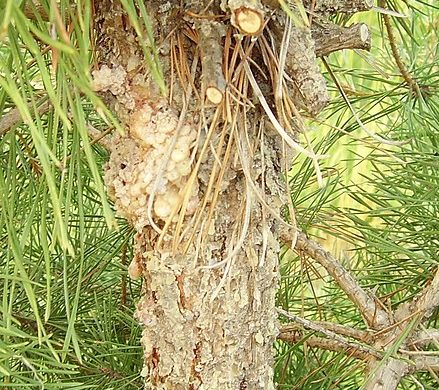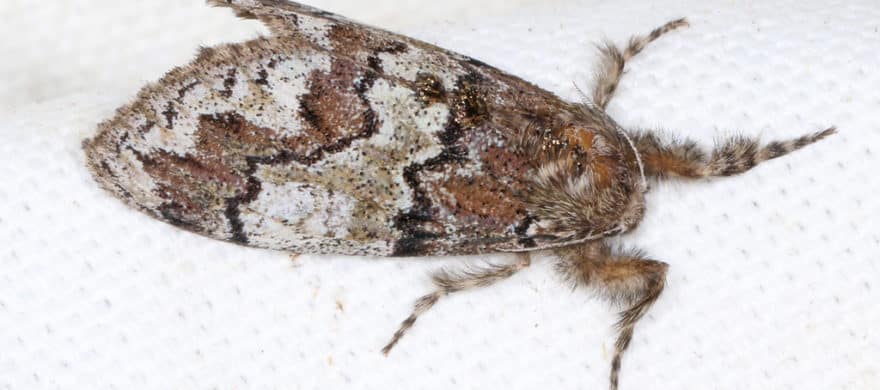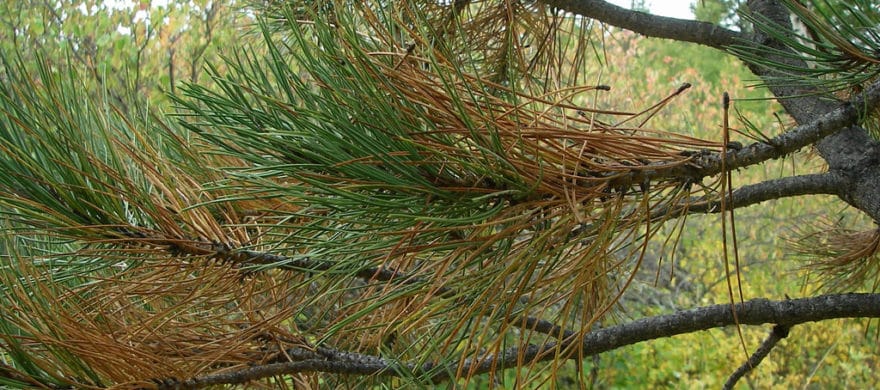Plants & Trees

Commonly affects: Austrian, Ponderosa, and Scotch Pines. Symptoms: The initial sign is the appearance of small yellowish-flesh colored globs of sap on the bark where the borer is feeding. By the time this is seen, the insect has been active in the tree for up to two years. Individual branches may die and/or break off
Read More

Affects primarily: Spruce, white fir and occasionally Douglas fir. Symptoms: Caterpillars begin feeding on the needles in the tops of treats and work their way down rapidly stripping the tree of its foliage. Life Cycle: Caterpillars, which hatch in late May and early June are blackish with long body hairs. They become ornamented with brightly
Read More

Plants Affected: Honeylocust Symptoms: This disease causes sunken and discolored areas of the bark and may affect both the branches and the trunk. As the disease progresses, small black “cushions” appear through the lentils or press in the bark. Symptoms often appear at the base of the tree where the fungus gains entry through the
Read More

Plants Affected: Primarily apple, crabapple, lilac and rose. Also affects turf grasses. Symptoms: Patches of whitish ‘powder’ develop on the upper leaf surface. Ends of branches, flowers and fruits may also become infected causing distortion and stunning. The white ‘powder’ becomes less visible in late summer and fall. The disease tends to be most active
Read More

Plants Affected: Pinyon pines. Symptoms: This insect affects the new growth of the tree. The new growth crooks over and dies, turning brown. A small nodule of pitch can be seen where it crooks over. Life Cycle: The larvae (small worm) feeds on the damaged shoot and turns into the moth which lays eggs on
Read More

Plants Affected: Pinyon pines. Symptoms: Flesh colored globs of sap or “pitch masses” can be seen oozing out of the main stem and, in severe cases, out of individual branches. As the severity of the infestation increases the tree will gradually decline in vigor and foliage will then out. Individual branches may die. The entire
Read More

Plants Affected: Austrian, Bristlecone, Mugo, Pinyon, Ponderosa, and Scotch pines. Symptoms: This insect attacks only the new growth at the ends of the branches. The affected shoot turns brown, shrivels, and may crook over. The damaged shoot is hollow and is easily broken off. Description/Life Cycle: Eggs are laid on the buds of new shoots
Read More

Plants Affected: Predominantly lilac, ash, poplars, cottonwood, aspen, cotoneaster and to a lesser extent birch, maple, walnut and dogwood. Symptoms: Oystershell scale is a sucking insect that implants itself into a twig and sucks the nutrients out resulting in a dieback that can be of a general nature throughout the entire plant or limited to
Read More

Affects: Juniper, pine, spruce, fir and other evergreens. What is needle cast? Contrary to popular opinion, evergreens will not retain their needles for the life of the plant. All evergreens such as junipers, pines, spruces, and firs will lose their oldest needles after a certain number of years. The number of years varies, depending on
Read More

Trees Affected: Ponderosa, Lodgepole, and Scotch Pines. Symptoms: This insect causes small globs of pitch to form around small holes in the trunk or in branches over 6” in diameter. The tree may start fading or browning and inspection by cutting into the tree may reveal a blue/gray staining of the wood. Description/Life Cycle: Eggs
Read More










